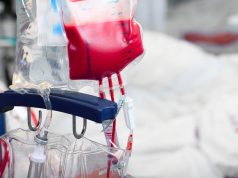Proportion of patients admitted with STEMI who received PCI in hospital in 2017 ranged from 36.9 percent in England to 78.6 percent in Canada
THURSDAY, May 5, 2022 (HealthDay News) — For patients admitted to hospital with acute myocardial infarction in six high-income countries, there are clinically important differences in three domains of care, according to a study published online May 4 in The BMJ.
Peter Cram, M.D., from the University of Texas Medical Branch in Galveston, and colleagues compared treatment and outcomes (coronary revascularization with percutaneous coronary intervention [PCI] or coronary artery bypass graft surgery, mortality, and efficiency) for patients aged 66 years and older admitted with ST elevation or non-ST elevation myocardial infarction (STEMI or NSTEMI) between Jan. 1, 2011, and Dec. 31, 2017, in the United States, Canada, England, the Netherlands, Israel, and Taiwan.
The researchers noted large differences between the countries for all outcomes. For example, the proportion of patients admitted to the hospital with STEMI who received PCI during 2017 varied from 36.9 to 78.6 percent (England and Canada, respectively); between 2011 and 2017, use of PCI for STEMI increased in all countries, with the largest increases seen in Israel (48.4 to 65.9 percent) and Taiwan (49.4 to 70.2 percent). In 2017, the proportion of patients with NSTEMI who underwent coronary artery bypass graft surgery within 90 days of admission varied from 3.5 to 11.7 percent (the Netherlands and the United States, respectively). Death within one year of admission for STEMI varied from 18.9 to 27.8 and 32.3 percent (the Netherlands, the United States, and Taiwan, respectively) in 2017.
“While all countries had areas of high performance, no country excelled in all three domains,” the authors write. “Therefore, our results suggest that all countries have important opportunities for improvement.”
Copyright © 2022 HealthDay. All rights reserved.








